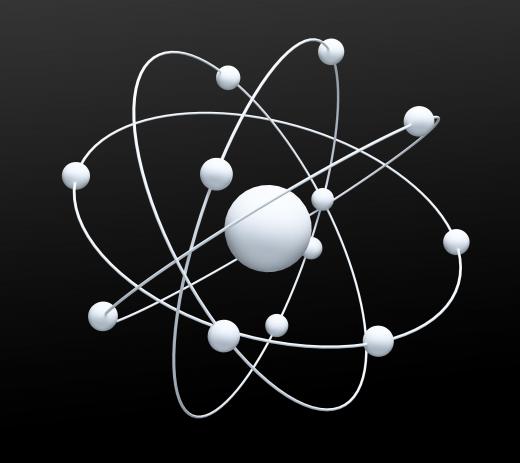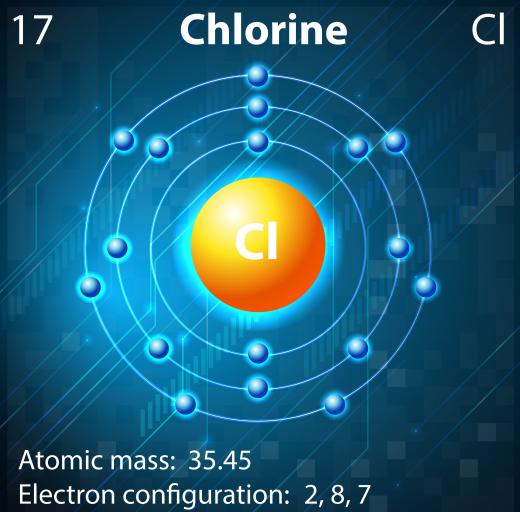What Is Aqueous Chloride?
Aqueous chloride is a solution including chloride ions and water. Generally, chloride will be mixed with a cation, or a positively charged ion, such as sodium, calcium, or potassium in a solution. Despite this, any solution which includes chloride ions mixed into a solute, such as water, can be defined as an aqueous chloride. Ordinarily, the (aq) symbol used to indicate an aqueous solution is only relevant when people are looking at a chemical equation and need to know the states of the products before the calculation.
Ions are charged particles that are formed when atoms either lose or gain an atom. Atoms have three energy levels, which are filled with electrons, the first taking a maximum of two and the second and third taking a maximum of eight. The ideal state for an atom is for all of these energy levels to be full, and to achieve this they either lose or gain an electron and become electrically charged. If an electron is gained, the ion is negatively charged, or an anion, and if an electron is lost, the ion is positively charged, or a cation. Chlorine, for example, forms a negatively charged ion by gaining an electron to fill up its outer electron shell.

Elements or ions that have been dissolved into a solvent such as water are referred to as aqueous by chemists. This is shown in chemical equations with the symbol (aq) after the element or ion’s symbol. Many different elements and compounds can be dissolved in water in this way, but generally they are only soluble when coupled with certain other chemicals. Chloride ions can only dissolve if paired with cations other than silver, lead, mercury, copper, or thallium. Common table salt can even be used to make an aqueous chloride solution.

Salt is a combination of sodium and chlorine, formed when the “Na+” sodium ion bonds with the “Cl-” chloride ion because of their opposing charges. When dissolved in water, the negatively charged chloride ions and positively charged sodium ions are free to roam around the mixture. This forms an aqueous chloride solution, and the two different ions present within it can be separated with electrolysis. If a positive and a negative electrode are placed into the water, the different ions congregate at the electrode with the opposite charge to them. Aqueous chloride can also form into other compounds such as hydrochloric acid if mixed with other elements such as hydrogen.
AS FEATURED ON:
AS FEATURED ON:












Discuss this Article
Post your comments